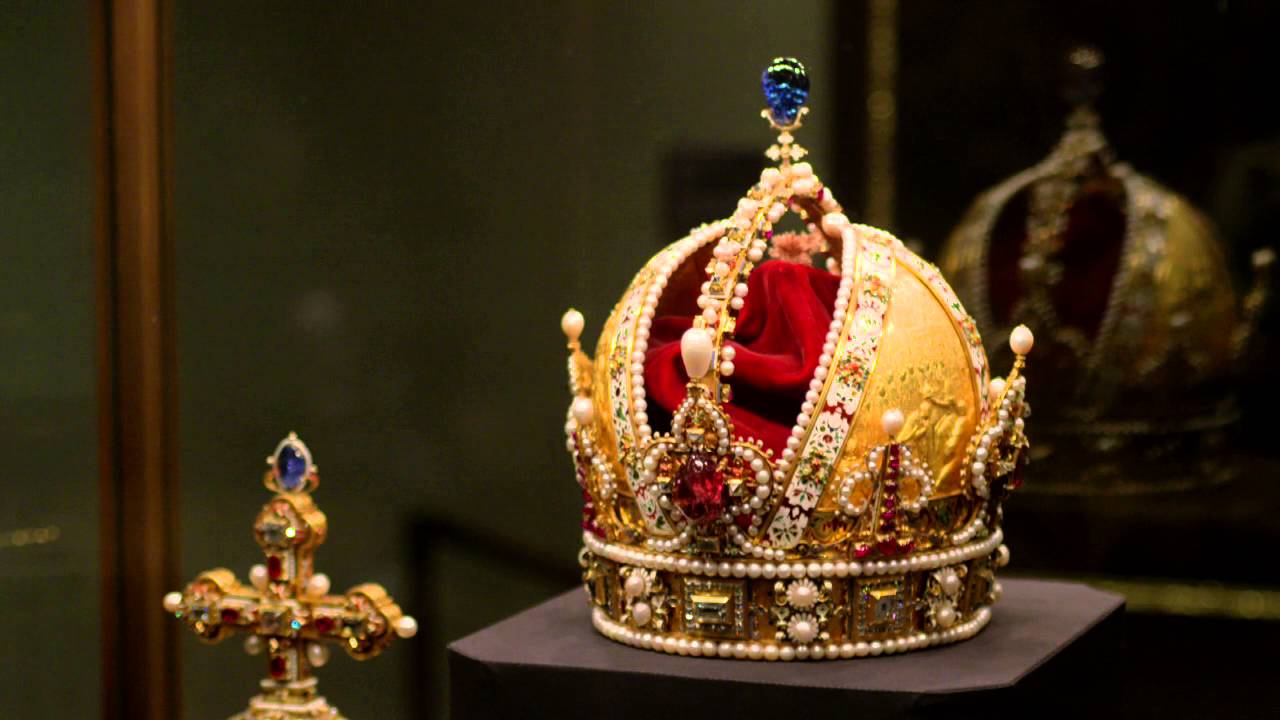Experience Travel Insights
Where Crowns and Jewels Forged an Empire: Inside Vienna’s Imperial Treasury
by Long Lin-Maurer • September 24, 2025

The Imperial Treasury of Vienna: Where Power, Myth, and Majesty Reside
Step through the quiet corridors of the Hofburg Palace into a realm where history is not merely written, but forged in gold. This is the home of Vienna’s crowns, jewels, and Imperial Treasury. The Schatzkammer Vienna, or Imperial Treasury, is far more than a dazzling imperial regalia collection; it is the symbolic heart of a thousand years of European history, a testament to the ambitions of emperors and the faith of nations. Here, within this hushed sanctuary, lies a tangible chronicle of the Holy Roman Empire and its successor, the Austro-Hungarian Empire, where each of the royal artifacts tells a story of divine right, political maneuvering, and masterful artistry.
Come and experience travel!
Personally designed, seamlessly delivered – your journey, our expertise!
We are a boutique travel agency and consultancy specializing in Hub & Spoke Tours across Central Europe, the Benelux and the Dolomites.
To explore the Treasury is to embark on an intellectual journey through the very concept of sovereignty. This collection of royal insignia and treasures is thoughtfully divided into two main sections: the Secular Treasury, which holds the imperial regalia and jewels, and the Ecclesiastical Treasury, a trove of relics and liturgical treasures that once legitimized worldly power. Together, they offer a profound insight into a worldview where earthly and heavenly authority were inextricably linked.
The Holy Roman Empire Crown: A Legacy Forged in Legend
At the core of the collection lies its most potent symbol: the Holy Roman Empire Crown. This is not the crown of Austria, but of a vast, complex entity that shaped Europe for a millennium. Likely created for the coronation of Emperor Otto I in 962, it is a masterpiece of medieval thought and craftsmanship. Its unique octagonal shape is no accident; it is a deliberate echo of the New Jerusalem, a representation of heaven on Earth.
To look upon it is to read a sermon in gold and jewels. The ornate plates are adorned with intricate enamel depictions of biblical kings like David and Solomon, and of Christ Pantocrator—the ruler of all. These images were not mere decoration; they were a constant reminder to the emperor of his sacred duties and his place as God’s chosen representative. The twelve precious stones set into the crown directly reference the twelve apostles, reinforcing the emperor’s role as a leader of Christendom. This was not a personal possession but a holy relic in its own right, a vessel through which divine authority was conferred. Its very presence in Vienna is a story in itself, spirited away from Nuremberg in the face of Napoleon’s advance, a desperate act to prevent the French usurper from claiming the ultimate symbol of European legitimacy.
The Austrian Imperial Crown: Insignia of the Habsburg Dynasty
While the Imperial Crown represents a pan-European legacy, the separate Habsburg crown jewels speak to the specific power of the Habsburg dynasty. The Austrian Imperial Crown, created in 1602 for Emperor Rudolf II, is a marvel of late Renaissance artistry and symbolism. Unlike the more austere medieval crown, this piece is a complex allegorical statement.
Its design is composed of three distinct parts, each rich with meaning. The circlet, with its fleur-de-lis motifs, symbolizes the emperor’s temporal power. The high arch, rising above it, represents his claim to the throne of the Holy Roman Empire, topped by a magnificent blue-green emerald signifying heaven. The golden mitre within, split into two halves, signifies his God-given spiritual authority. The crown, sceptre, and imperial orb together formed the Austrian imperial insignia of the newly declared Austrian Empire in 1804—a strategic political move by Franz II/I after the dissolution of the Holy Roman Empire. They are not just objects of breathtaking beauty, but instruments of a profound political rebranding, asserting a new, hereditary imperial identity for the House of Habsburg.
Relics and Riches: The Ecclesiastical Treasury
In a world where faith was the bedrock of society, relics were the ultimate currency of power. The Ecclesiastical Treasury houses objects believed to possess immense spiritual potency, items that connected the Habsburg emperors directly to the sacred history of Christianity. Chief among them is the Holy Lance, or the Spear of Destiny. Reputed to be the spear that pierced the side of Christ, it was one of the most important relics in Christendom. Its possession was believed to guarantee victory for its owner, and it was carried into battle by Holy Roman Emperors for centuries. The layers of history are visible on the object itself—the original iron spearhead, later encased in gold and silver sheaths bearing the names of emperors, each man adding his own chapter to its formidable legend.
Come and experience travel!
We design bespoke travel experiences with a perfect balance of cultural depth, efficiency and comfort.
Specializing in seamless hub-and-spoke journeys, we create well-paced, immersive itineraries tailored to your interests.
Equally enigmatic is the Agate Bowl, a single, enormous piece of carved agate from late antiquity. For centuries, this mystifying object was believed by many to be the Holy Grail itself. While that claim is legendary, its tangible history is just as fascinating. The visible inscription, interpreted and reinterpreted over the centuries, showcases how an object’s meaning can be shaped by belief and desire. These relics were not just curiosities; they were foundational pillars of the emperor’s authority, proving his divine favor and solidifying his right to rule over a devout populace.
Beyond the Gold: The Treasures of the Order of the Golden Fleece
A unique and often overlooked section of the Treasury offers a glimpse into the exclusive world of chivalric diplomacy: the treasures of the Order of the Golden Fleece. Founded by Philip the Good, Duke of Burgundy, in 1430, the order became a personal possession of the Habsburgs. It was the most prestigious and exclusive order of chivalry in Catholic Europe, a tool for forging alliances and rewarding loyalty among the highest echelons of the aristocracy, and a key part of the sovereign’s jewels and regalia.
The collection includes the breathtaking ceremonial vestments worn by the knights and heralds of the order, magnificent robes of deep red velvet and shimmering gold embroidery that speak of unimaginable wealth and pageantry. Most impressive is the Potence, a massive golden chain of office bearing the enameled coats of arms of every knight of the order. To view it is to see a visual map of European power politics, a network of influence and allegiance that the Habsburgs carefully cultivated for centuries. This was not just a fraternity; it was a strategic asset, and its treasures are a testament to the soft power that was just as crucial to empire-building as any army.
A Narrative Woven in Jewels
The Imperial Treasury is more than the sum of its parts. It is a place where every gem has a purpose, every inscription a political subtext, and every object a role in the grand theatre of European history. These are not static displays in a museum; they are the active instruments of power, faith, and ambition. To witness these Schatzkammer treasures is to understand how an empire was built, not just with steel and stone, but with symbols and stories. To truly comprehend the Emperor’s treasury jewels is to walk through the corridors of history itself, and with expert interpretation, their silent, glittering stories come alive, transforming a visit into a profound intellectual and cultural journey.
Imperial Treasury and Crown Jewels of Vienna: Online Resources
- Kunsthistorisches Museum Vienna: Imperial Treasury
– The official website of the Kunsthistorisches Museum (KHM) providing an overview of the Imperial Treasury (Schatzkammer) collection at the Hofburg Palace, Vienna. - KHM: Imperial Crown of the Holy Roman Empire
– A dedicated page from the Kunsthistorisches Museum detailing the history, symbolism, and craftsmanship of the Imperial Crown of the Holy Roman Empire, a centerpiece of the collection. - KHM: The Holy Lance
– Information from the KHM regarding the Holy Lance, another profoundly significant and ancient relic housed within the Imperial Treasury, exploring its historical and mythical importance. - Wikipedia: Imperial Treasury, Vienna
– A comprehensive Wikipedia article offering a historical and descriptive overview of the Imperial Treasury in Vienna, its origins, and its most important exhibits. - Wikipedia: Imperial Crown of the Holy Roman Empire
– The Wikipedia article focusing specifically on the Imperial Crown of the Holy Roman Empire, detailing its construction, imperial use, and cultural significance. - Habsburger.net: Imperial Crown and Royal Regalia
– An article from the historical project Habsburger.net exploring the broader context and symbolism of the Habsburg imperial crown and other royal regalia within the Austrian monarchy. - Google Arts & Culture: Kunsthistorisches Museum Vienna
– A visually rich presentation by Google Arts & Culture showcasing the Kunsthistorisches Museum Vienna, including high-resolution images and stories related to the Imperial Treasury. - Britannica: Hofburg
– Encyclopedia Britannica’s entry on the Hofburg Palace, mentioning its role as the historical seat of power and home to the Imperial Treasury and its priceless crown jewels. - Wien.info: Imperial Treasury (Schatzkammer)
– The official tourism portal for Vienna offers cultural information about the Imperial Treasury, its key exhibits, and its significance within the city’s historical landscape. - Deutsche Wikipedia: Schatzkammer (Hofburg)
– The German Wikipedia article providing an alternative and detailed perspective on the Imperial Treasury at the Hofburg, offering additional historical and contextual insights.
